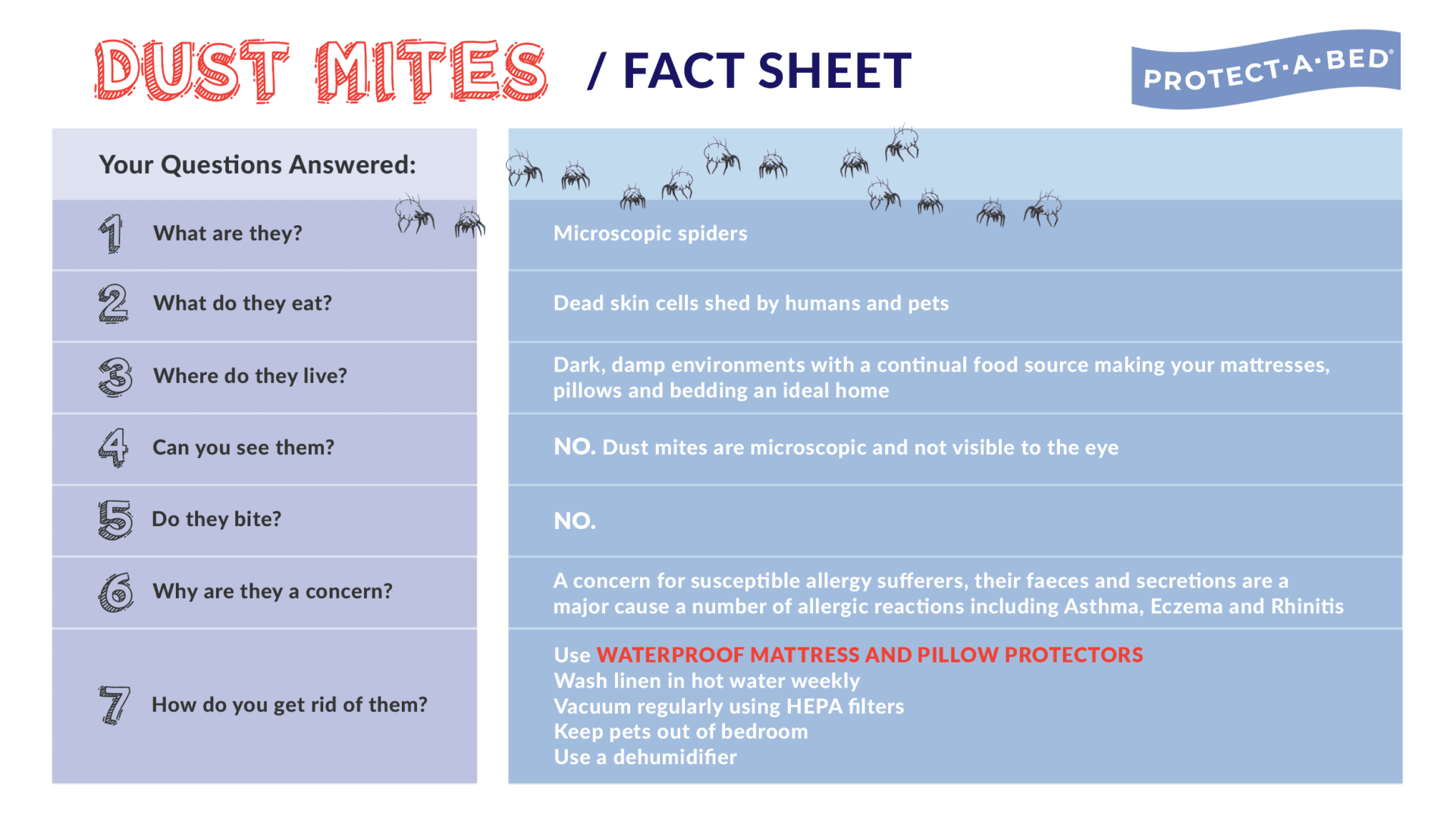ARE DUST MITES IN YOUR BED MAKING YOU SICK?
Did you know that the bed you fall into each night, the place that’s meant to be your refuge at the end of a long day, could be making you and your family sick?
It’s time to throw back the covers on a common cause of allergies that thrives in your bed: the dust mite.
These microscopic relatives of spiders are a primary cause of allergies and asthma symptoms. They may seem harmless enough, feeding unseen on the dead skin cells of people and pets, yet they are anything but.
The problem lies in the poop. Dust mite droppings contain a potent protein allergen that can trigger allergy symptoms such as eczema, allergic rhinitis and asthma.
Wherever you have soft furnishings in the house – carpets, couches, curtains, beds – you’ll find a dust mite colony. But by far the highest concentration of dust mites and their waste can be found in beds, where we spend roughly a third of our day.
Dust mites need warmth, moisture and a good supply of dead skin cells, and our beds check all the boxes. That’s why the average mattress harbours anywhere from 100 000 to 10 million mites, while 10 percent of a two-year-old pillow’s weight can be made up of dust mites and their waste.
10 TIPS FOR REDUCING BEDTIME ALLERGIES
The first step in managing allergy symptoms is to avoid triggers. Follow these 10 tips to significantly reduce your symptoms by cutting down your exposure to dust mites.
- In the fight against dust mites, one of the simplest and most effective weapons is the mattress protector. To be mite-proof, a mattress protector must be woven tightly enough to be waterproof, like the Protect-A-Bed range, which forms an impenetrable barrier to dust mites while still being breathable. And don’t forget the pillows. Encase pillows in zippered pillow protectors so you’re not breathing in dust mite droppings all night.
- Vacuum your mattress once a month to remove mites, using a vacuum cleaner with a good HEPA filter. Or you could invest in a total mattress encasement like Protect-A-Bed’s Buglock Plus, which completely encases the mattress with an impenetrable three-sided zipper system.
- Vacuum bedroom carpets and the bed base frequently. Allow a few hours before going back into the room to let remaining airborne dust settle.
- Wash bed linen every week on a hot wash (over 55 degrees). Wash duvet inners and pillows once a month. (If you use pillow protectors, you need only wash your pillows once a year.) Wash your mattress protector on a hot wash every four to six weeks to remove absorbed perspiration and dead skin cells.
- Wash soft toys frequently in hot water. Put those that can’t be hot-washed into the freezer for 24 hours to kill any mites, then wash in cold water to remove dust.
- Since mites love moist environments, pull back the covers each morning to let your bed dry out before you make it.
- Synthetic pillow and duvet fillings are less hospitable to dust mites than feather and down.
- In severe cases of allergy, replace carpets with hard flooring, and curtains with blinds. Mop floors daily, and wipe down blinds with a damp cloth.
- Cut the clutter. Where there is dust, there are dust mites, so remove knick-knacks and clutter that gathers dust. When you do dust the room, use a damp cloth to prevent dust from becoming airborne.

